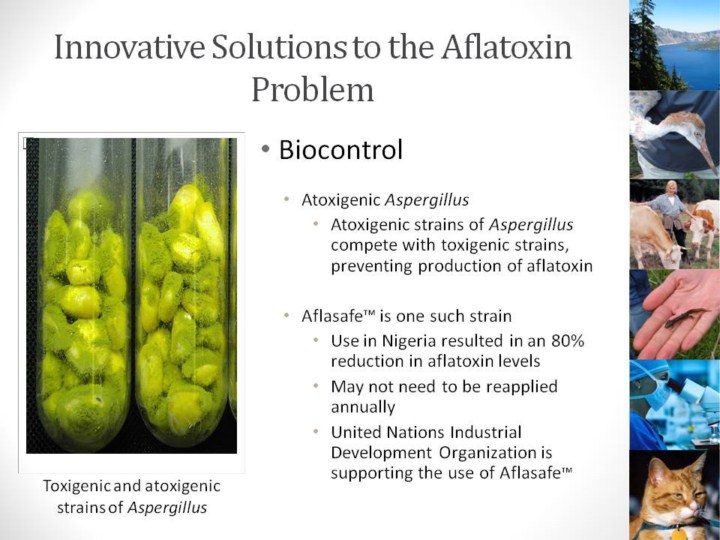| front |1 |2 |3 |4 |5 |6 |7 |8 |9 |10 |11 |12 |13 |14 |15 |16 |17 |18 |19 |20 |21 |22 |23 |24 |25 |26 |27 |28 |29 |30 |31 |review |
 |
Bioengineering has been used as a mechanism to implement new, technologically-based solutions. Genetic modification to develop crop resistance to Aspergillus is being explored. Additionally, certain strains of Aspergillus are atoxigenic and are able to be introduced into the agricultural environment to prevent production of aflatoxin. The “biopesticide” Aflasafe™ is an example of one of these strains. Aflasafe is not a chemically derived pesticide, and trials in the US have shown successful reduction of contamination (in the context of integrated crop management programs). In a case study in Nigeria, provisional registration and use of Aflasafe™ in 2009 allowed farmers to reduce aflatoxin by 80%. Additionally, Aflasafe includes some long-term benefits, as it may not need to be applied every year (depending on the environment).
In addressing the global Aflatoxin problem, the United Nations Industrial Development Organization (UNIDO) is taking action in Kenya and Nigeria to provide further case studies of prevention methods with Aflasafe™. Future goals include manufacturing, marketing, and distribution on a wide-scale. 16, 37 However, applying Aflasafe™ is an additional cost for farmers and it must be applied early before farmers even know if aflatoxin will be a problem during any growing season. Use of atoxigenic Aspergillus may be cost-prohibitive for farmers in many developing countries. Genetic modification to develop crop resistance to Aspergillus is also being explored. |